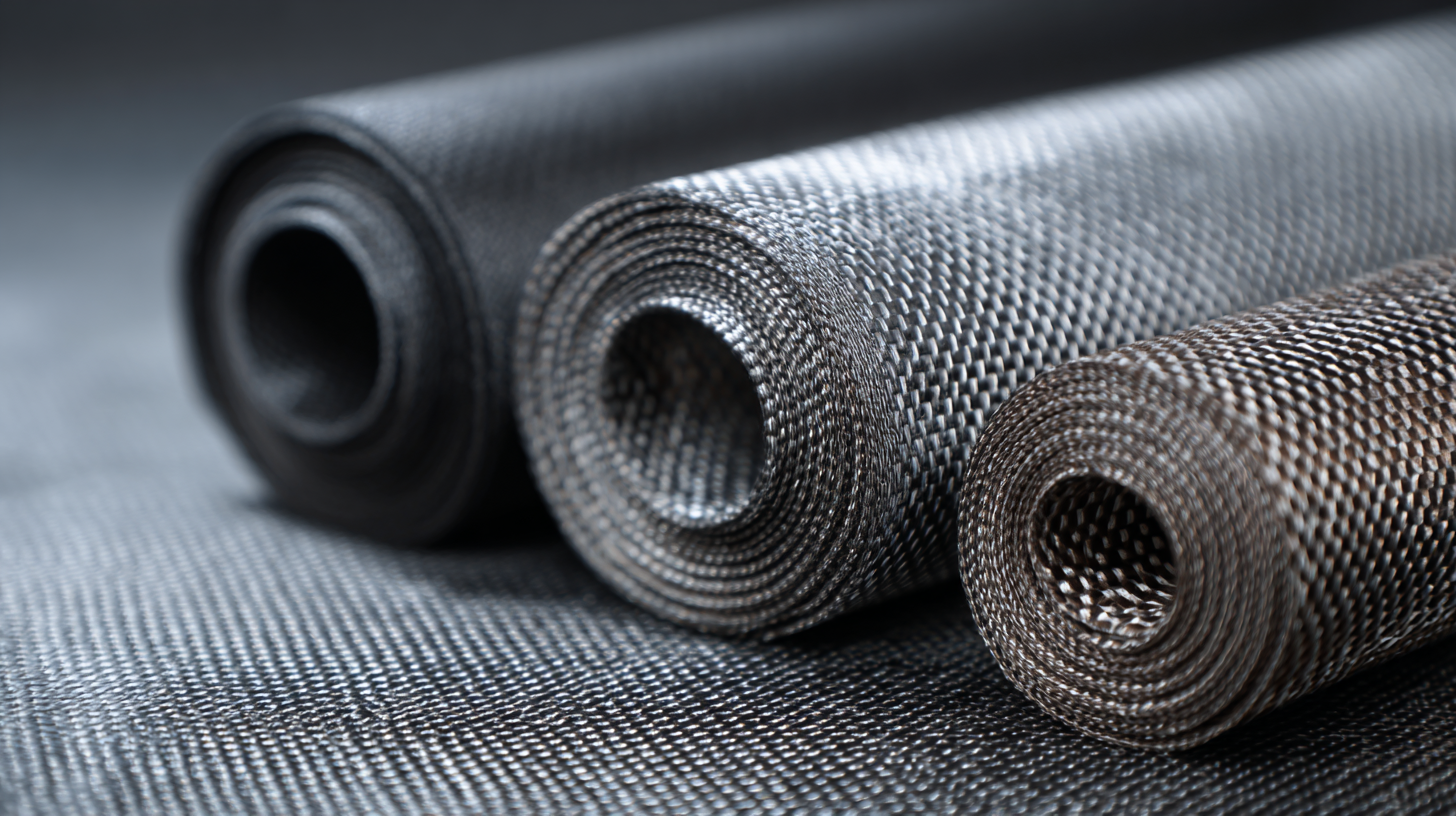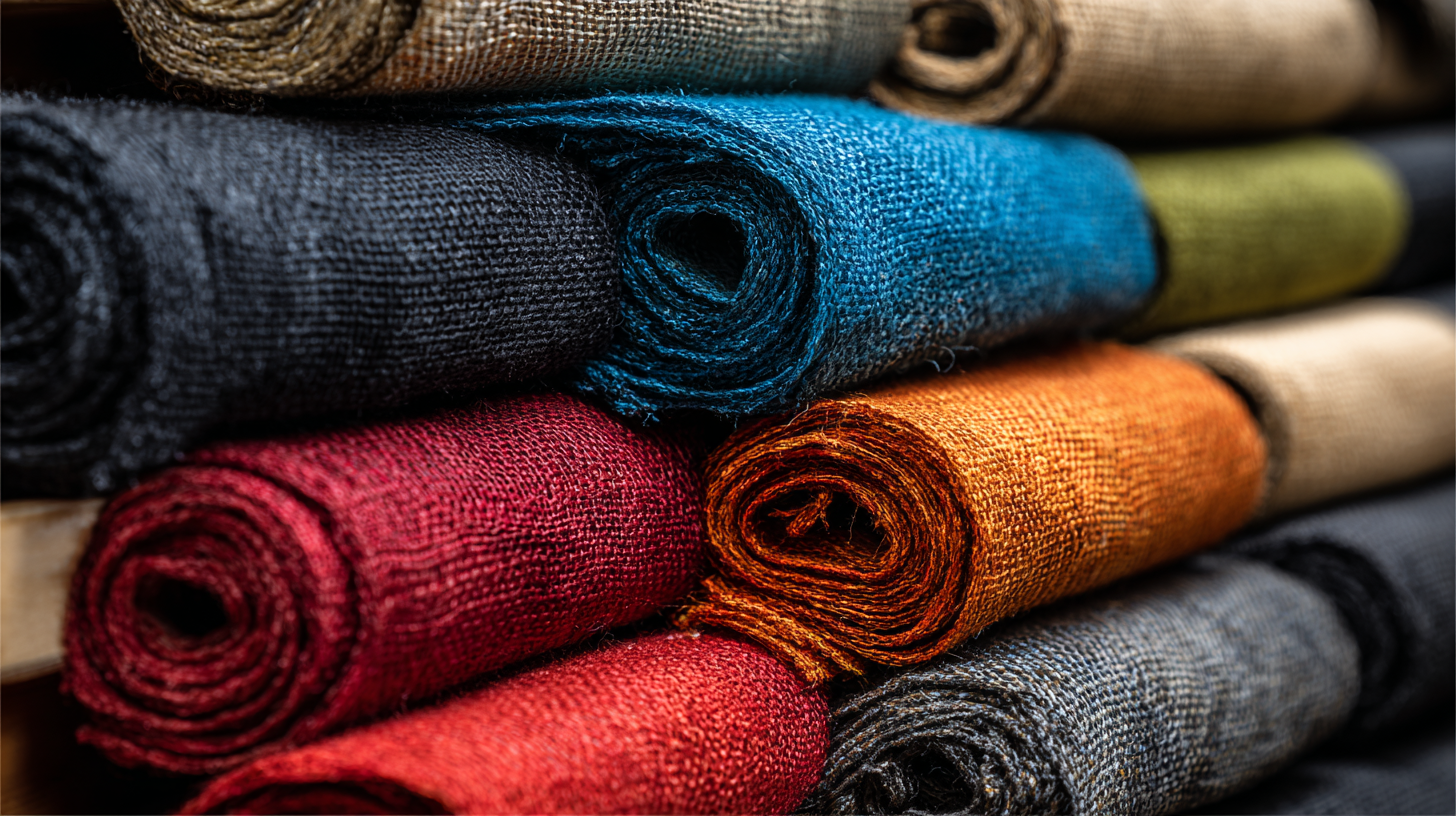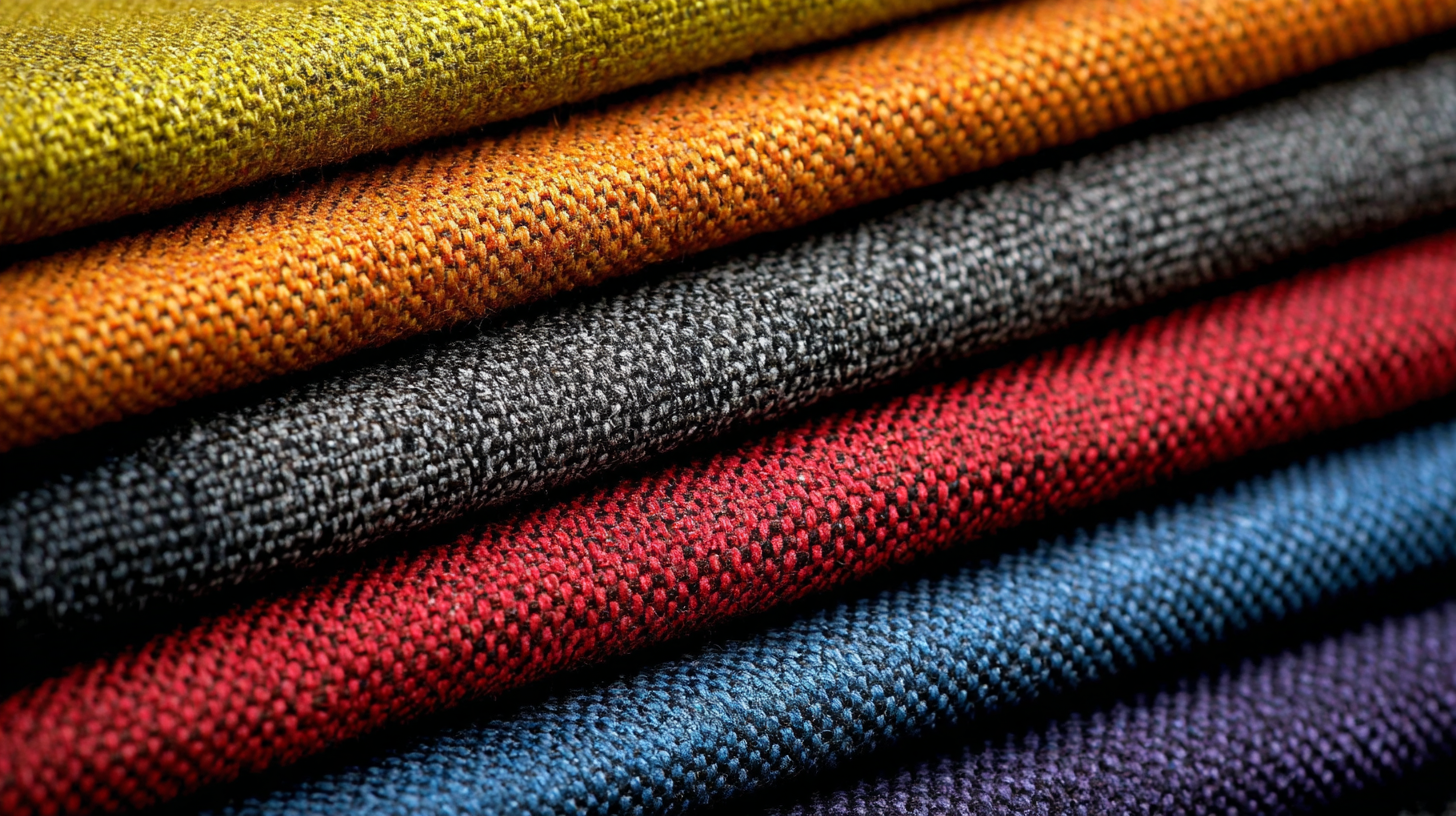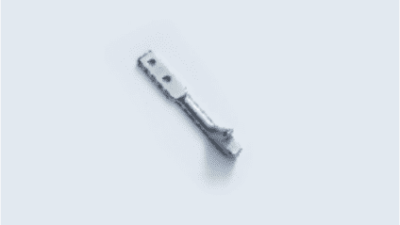A Comprehensive Guide to Choosing the Right Multiaxial Fabric Cloth for Your Project
Table of Contents
- Understanding Multiaxial Fabric: Key Features and Benefits
- Types of Multiaxial Fabrics: A Comparison of Materials
- Choosing the Right Fabric Weight for Your Specific Project Needs
- Application Areas: Where Multiaxial Fabrics Excel
- Tips for Working with Multiaxial Fabrics: Best Practices for Success
- Cost vs. Performance: Finding the Best Value Multiaxial Fabric Options
- Maximizing Efficiency in Gardening: Insights from the Latest Horticulture Data on Rake Needle Use
- FAQS
- Conclusion
- Related Posts
You know, the textile game is moving so fast these days, and picking the right material is honestly a big deal if you want your project to really shine. Have you heard about Multiaxial Fabric Cloth? It’s been catching quite a bit of buzz because it boosts the strength of the structure while keeping things lightweight — and that’s a huge plus, whether you're into cars, planes, or all sorts of other stuff. Industry folks say that worldwide, the demand for multiaxial fabrics is likely to grow by over 10% each year, thanks to all the new tech and better manufacturing methods coming out. Companies like DANYANG YIXUN MACHINERY CO., LTD are doing some amazing work with their cutting-edge knitting machines, helping businesses make top-notch fabrics. Getting a good grip on what makes Multiaxial Fabric Cloth special and how you can use it could really change the game for your projects — making sure they last and perform well, even under tough conditions. This guide's just here to give you some handy tips and insights so you can pick the perfect multiaxial fabric for whatever you’re working on — it’s all about making smarter choices.

Understanding Multiaxial Fabric: Key Features and Benefits
Multiaxial fabrics are really clever textiles designed to boost mechanical properties for a bunch of different uses, especially in composites and advanced manufacturing. What makes them pretty cool is their grid-like, multi-directional setup—fibers are arranged in different angles like 0°, 90°, and around ±45°, giving the material a lot more strength and stiffness. That’s a game-changer when it comes to structural stuff because these fabrics help achieve stronger, sturdier parts. According to a report by Smithers Pira, the global market for multiaxial fabrics is expected to grow at about 6.7% annually from 2021 to 2026. Basically, more industries like aerospace, automotive, and construction are jumping on board with this technology.

And it’s not just about strength—these fabrics also boost impact resistance and fatigue life, meaning they last longer and take hits better. What's more, using these fabrics can make structures lighter without sacrificing durability—think about how this is perfect for aerospace, where saving weight can lead to big fuel savings and better overall performance. As highlighted by research from CompositesWorld, composites made with multiaxial fabrics can resist impacts 20 to 30% better than older, unidirectional types. Plus, they’re pretty easy to handle and layer during manufacturing, which means making parts with them isn’t a headache—leading to smoother, faster production overall.
Types of Multiaxial Fabrics: A Comparison of Materials
When you're figuring out which multiaxial fabrics to use for your project, it really helps to understand the different types out there. These fabrics are designed to be super strong and durable, but still light as a feather—which makes them perfect for all sorts of things, from aerospace to cars. The main materials you'll find in multiaxial fabrics are fiberglass, carbon fiber, and aramid fibers. Each one has its own special qualities that make it better suited for particular needs.
Fiberglass is a pretty popular pick, mainly because it offers great strength and doesn’t break the bank. You'll see it used a lot in things like boat builds or wind turbines, thanks to its impact resistance and durability.
Then there’s carbon fiber, which is known for being incredibly strong and stiff for how lightweight it is—making it a go-to for racing cars, drones, and other high-performance stuff.
And finally, there are aramid fibers, like Kevlar, which are fantastic when you need heat and abrasion resistance—think protective gear or military gear. Taking a closer look at the pros and cons of each type will help you pick the perfect fabric for your project—so it’ll meet all your specific needs without any hassle.
Choosing the Right Fabric Weight for Your Specific Project Needs
Starting a project that needs multiaxial fabric? Then, choosing the right fabric weight is a pretty big deal. It’s not just about how it feels—we’re talking about how sturdy and functional your final product will be. Like, industry folks say lighter fabrics—around 200 to 400 g/m²—are great if you want something flexible and easy to handle. Think automotive interiors or lightweight sports gear. On the flip side, if you need something tough and rigid, heavier fabrics—over 600 g/m²—are your friends, especially for things like boat hulls or parts in aerospace.
Here's a quick tip: always keep in mind what your end goal is when you're picking the fabric weight. Sometimes, blending different weights can give you that perfect balance of strength and efficiency.
By the way, DANYANG YIXUN MACHINERY CO., LTD is a leader in making advanced warp knitting machines. They’ve got models designed for all kinds of fabrics, including those complex multiaxial and bi-axial types. Their gear is built to help produce fabrics that match your project’s specific needs, making sure the weight and construction hit the mark. Knowing what fabric weight you need isn’t just about meeting industry standards—it can also make your finished product last longer and perform better, which is pretty awesome when you're aiming for success.
Oh, and one last thing—working with a manufacturer who offers custom solutions can really make a difference. They can help tailor everything so that your fabric specs match up perfectly with what your project needs, upping both quality and functionality.
Application Areas: Where Multiaxial Fabrics Excel
You know, multiaxial fabrics are pretty fascinating—they’re characterized by their layered and directional fiber arrangements. People have really started noticing their benefits, especially because they’re lightweight but super strong. I read a report from MarketsandMarkets that estimates the global market for advanced composites could hit around $29.4 billion by 2025. A big chunk of that growth is coming from how these fabrics are being used in cars and airplanes—pretty crucial for boosting fuel efficiency and overall performance, right?
And it’s not just the automotive and aerospace sectors. In construction and wind energy, multiaxial fabrics are becoming more and more popular for reinforcing structures. According to some insights from CompositesWorld, the wind industry is expected to grow at a compound annual rate of about 12%. That’s huge, and it definitely fuels the demand for high-performance materials like these fabrics. They’re great because they meet tough design criteria, yet help keep things lighter and more durable.
It’s these qualities that make them a go-to for manufacturers looking to push the envelope and stay ahead of market trends. All in all, their flexibility and adaptability really position multiaxial fabrics as a key player in the future of advanced materials—exciting times, I’d say!
Tips for Working with Multiaxial Fabrics: Best Practices for Success
Hey, when you're working with multiaxial fabrics, knowing some best practices can really make a big difference in how well your project turns out. One thing I always pay attention to is the fiber orientation — it’s pretty crucial. These fabrics usually have layers with fibers going in different directions, and that can really affect how strong and stiff your final composite will be. So, it’s a good idea to align those fibers with the load paths you expect — that way, you're maximizing their strength and stiffness, no doubt.

Another thing that trips people up is handling and cutting the fabrics. For clean, fray-free cuts, make sure you're using sharp, specialized tools made for composites — trust me, it makes a huge difference. When you’re laying down multiple layers, take your time to ensure each one sticks well before adding the next. You don’t want any shifting that could weaken the whole structure. And hey, don’t forget to do a quick test layup when trying out new fabric types. It’s a simple step but super helpful — you get a feel for how they behave, and you can tweak your technique as needed. It’s all about learning as you go, right?
Cost vs. Performance: Finding the Best Value Multiaxial Fabric Options
When you're choosing the right multiaxial fabric for your project, it’s really important to find that sweet spot between cost and performance. Sure, higher-quality fabrics tend to be pricier, but they can make a big difference in how durable and effective your final product turns out. Take some time to really think about what your project needs—like, if you're working on something that needs high tensile strength for structural purposes, it might be worth splurging on the better materials. But if it’s a less demanding application, going for a more budget-friendly option could save you a lot without sacrificing what you need.
A couple of tips: pay close attention to specific properties like weight, weave style, and how well it plays with your resin. Doing a quick cost-benefit check can help you figure out if spending extra on that premium fabric is actually worth it. Also, don’t forget to buy from reputable suppliers—they often provide reliable performance data and customer reviews that you can trust.
Looking into alternatives might also help save some cash. For example, checking out lesser-known brands or buying in bulk can get you better prices, all while still meeting your performance needs. And if you’re feeling adventurous, reaching out directly to manufacturers could open up some special options or discounts tailored just for your project. In the end, it’s all about getting the best value for your money and making sure you don’t overlook those little opportunities that can make a big difference.
A Comprehensive Guide to Choosing the Right Multiaxial Fabric Cloth for Your Project - Cost vs. Performance: Finding the Best Value Multiaxial Fabric Options
| Fabric Type | Weight (g/m²) | Thickness (mm) | Price (per m²) | Tensile Strength (MPa) | Applications |
|---|---|---|---|---|---|
| E-Glass Multiaxial | 450 | 0.4 | $7.50 | 350 | Boat Hulls, Wind Turbines |
| Carbon Fiber Multiaxial | 300 | 0.3 | $25.00 | 600 | Aerospace, Automotive |
| Aramid Fiber Multiaxial | 400 | 0.35 | $20.00 | 450 | Protective Gear, Military |
| Polyester Multiaxial | 500 | 0.5 | $5.00 | 250 | Construction, Composite Structures |
Maximizing Efficiency in Gardening: Insights from the Latest Horticulture Data on Rake Needle Use
Maximizing efficiency in gardening can often hinge on the tools we choose and how effectively we use them. Recent insights from horticulture studies underscore the importance of rake needle selection in achieving optimal results. A report from the American Society for Horticultural Science highlighted that utilizing the right rake can reduce gardening time by up to 30%. Specifically, rakes with flexible, thin needles are recommended for tasks such as dethatching and aerating soil, as they can easily maneuver through dense grass without damaging the roots.
Moreover, the latest data indicates that gardeners who regularly invest in high-quality rakes, like those with ergonomic designs, can significantly decrease the risk of strain or injury. According to a survey conducted by the National Gardening Association, more than 50% of gardeners reported frequent physical discomfort due to improper tool usage. Transitioning to ergonomic rakes not only promotes better posture but also enhances productivity—users can cover more ground efficiently, leading to healthier gardens. Incorporating these recommendations into your gardening routine can transform an arduous chore into an efficient and even enjoyable task.
FAQS
: Fabric weight directly influences the structural integrity and performance of the final product, making it crucial for the intended application.
Lighter fabrics weighing between 200 to 400 g/m² are ideal for applications that require flexibility and ease of handling, such as automotive interiors or lightweight sports equipment.
Heavier fabrics, typically over 600 g/m², provide enhanced durability and rigidity, making them suitable for applications like boat hulls or aerospace components.
Yes, using a combination of different weights can enhance strength and optimize both performance and material efficiency.
Balancing cost and performance is crucial; higher-quality fabrics may be more expensive but can significantly enhance durability and performance, making them worth the investment for demanding applications.
Specific properties such as weight, weave type, and resin compatibility should be evaluated alongside project requirements to find the best fabric option.
Consider alternatives such as lesser-known brands, bulk purchasing options, or engaging directly with manufacturers, which can lead to competitive pricing while still meeting performance criteria.
Sourcing from reputable suppliers ensures access to reliable performance data and customer reviews, which are critical for making informed decisions about fabric selection.
Conclusion
Hey there! So, in our guide, 'A Comprehensive Look at Choosing the Right Multiaxial Fabric Cloth for Your Project,' we really dive into what makes these fabrics such a popular pick for all kinds of uses. We talk about the different kinds of Multiaxial Fabrics out there and give you some handy tips to pick the right weight based on what you’re working on. We also go into where these fabrics really shine—like what applications they’re best suited for—and share some pro tips on working with them smoothly.
Plus, we can’t forget the whole cost versus performance thing. We want you to find the best value without sacrificing quality. And since we’re the folks at DANYANG YIXUN MACHINERY CO., LTD, experts in multiaxial warp knitting machines, we totally get how important it is to pick the right fabric for your projects. We’re here to back you up every step of the way!


